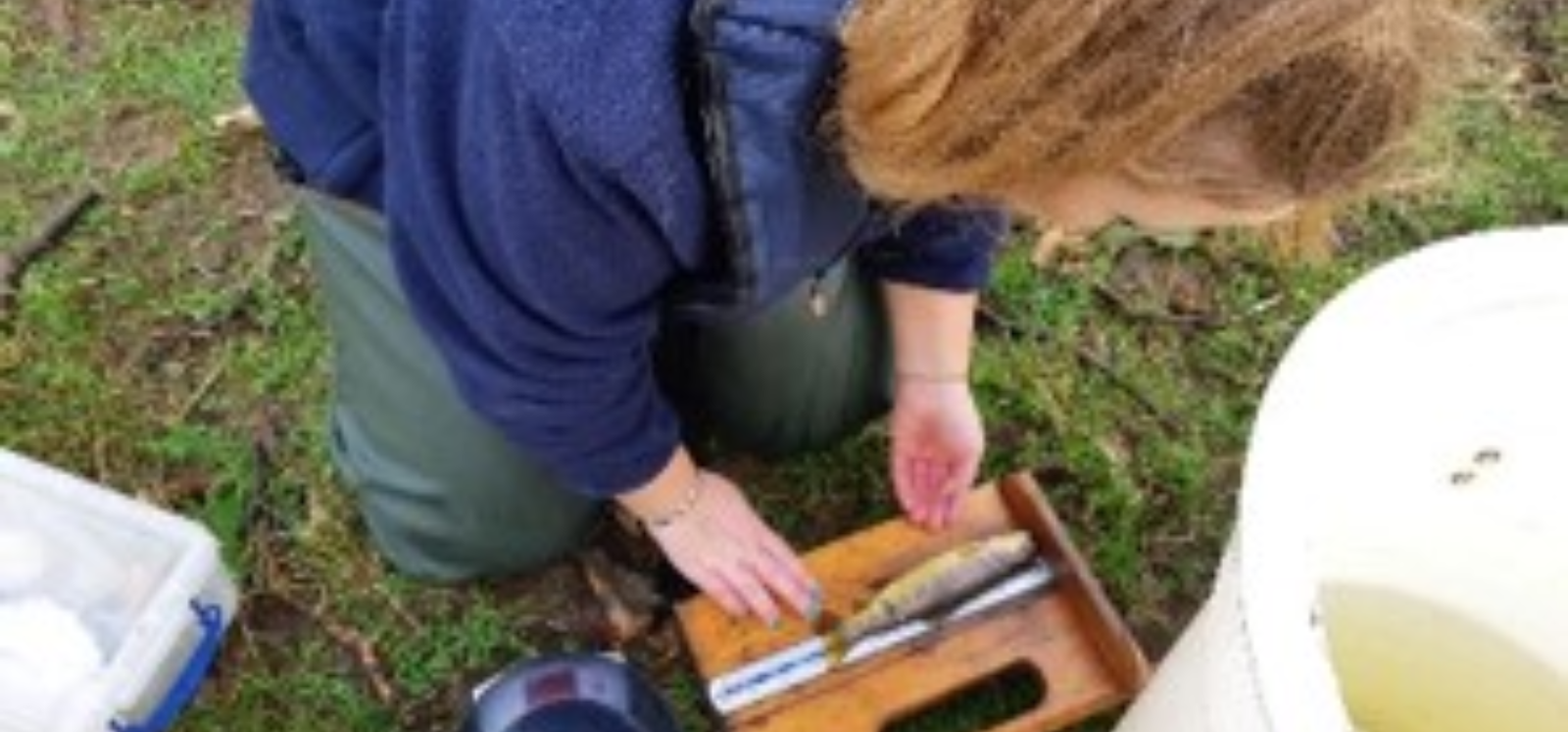I split my Placement year between two places; the Loughs Agency and the Society for the Protection Of Turtles (SPOT). A typical week in the loughs agency consisted of carrying out field work, which could range from surveying fish in rivers through electro fishing surveying where we were identify the species and recording their length and weight, bathymetry and lake surveys, checking fish traps where we also tagged any sea trout that was in the trap before releasing, to looking at the environment surrounding the river and how we can improve it through tree planting, carrying out bank protection to prevent land erosion or surveying river banks to record issues including barriers or invasive species the three main concern being giant hogweed, Himalayan balsam and Japanese knotweed.
We also carried out lab work such as dissections where we took stomach content and removed otoliths for future use. The paper copy of any data sheets is typed up on excel and stored electronically and the data is then analysed. Once the data is analysed, we write up what we have found in a report comparing the results to previous years and discussing any potential improvements that could be made that is then published on the Loughs Agency website.
My favourite weeks at SPOT where when I carried out night work. We walked the beach every 10 minutes looking for turtles and turtle tracks. When we find a track, we use the characteristics of the track to identify the turtle species. We sit behind the turtle observing and recording their behaviour. When the turtle begins to lay we mark out where the nest is so we can cover it with a cage when the turtle re-enters the water to protect her eggs from predation from foxes and stray dogs. We then check the turtle for any tags and measure the turtle’s carapace length and width and note her scute pattern and note any abnormalities. Each nest is given an individual nest tag and a temperature data logger is placed in the nest. We take a small skin sample from the turtles shoulder to use for genetics and stable isotope analysis and the turtle is given any tags it did not previously have.
What have your placement highlights been so far on placement
The highlight of my placement has by far been getting to work hands on with these animals. Both my placements allowed me to get involved in every aspect of my placement including physically working with the animals themselves. I got to handle fish to measure their weight and length as well as take scale samples from the fish for aging. When working with the turtles I got to take length and width measurements as well as insert tag into their shoulder as a form of identification for each turtle , as well as take skin samples for genetics and stable isotope testing and attaching a metal flipper tag to the turtles mainly for use of fishermen who may catch turtles in fishing nets. Getting to work so closely with these animals and carrying out work and research that helps to protect and conserve these animals has been very rewarding. In the future I would like to pursue a career in a similar field that I carried out my placement in.
My advice to students considering applying for work placement is DO IT! Aside from how it will be beneficial when applying for jobs after university, it honestly has been just so enjoyable! There are very few days that placement has felt like “work” because it has been so much fun, it has completely made me fall in love with my degree and verified that this is what I want my future career to be. I have gain so much experience and knowledge that I don’t think I would be able to gain during my academic experience alone. Working in industry really opens up your eyes to the real world of science. Take advantage of the opportunities out there, local and abroad because you will not regret it. I can’t thank everyone from the Loughs Agency and SPOT enough, it has been a blast!
Isabelle Price

